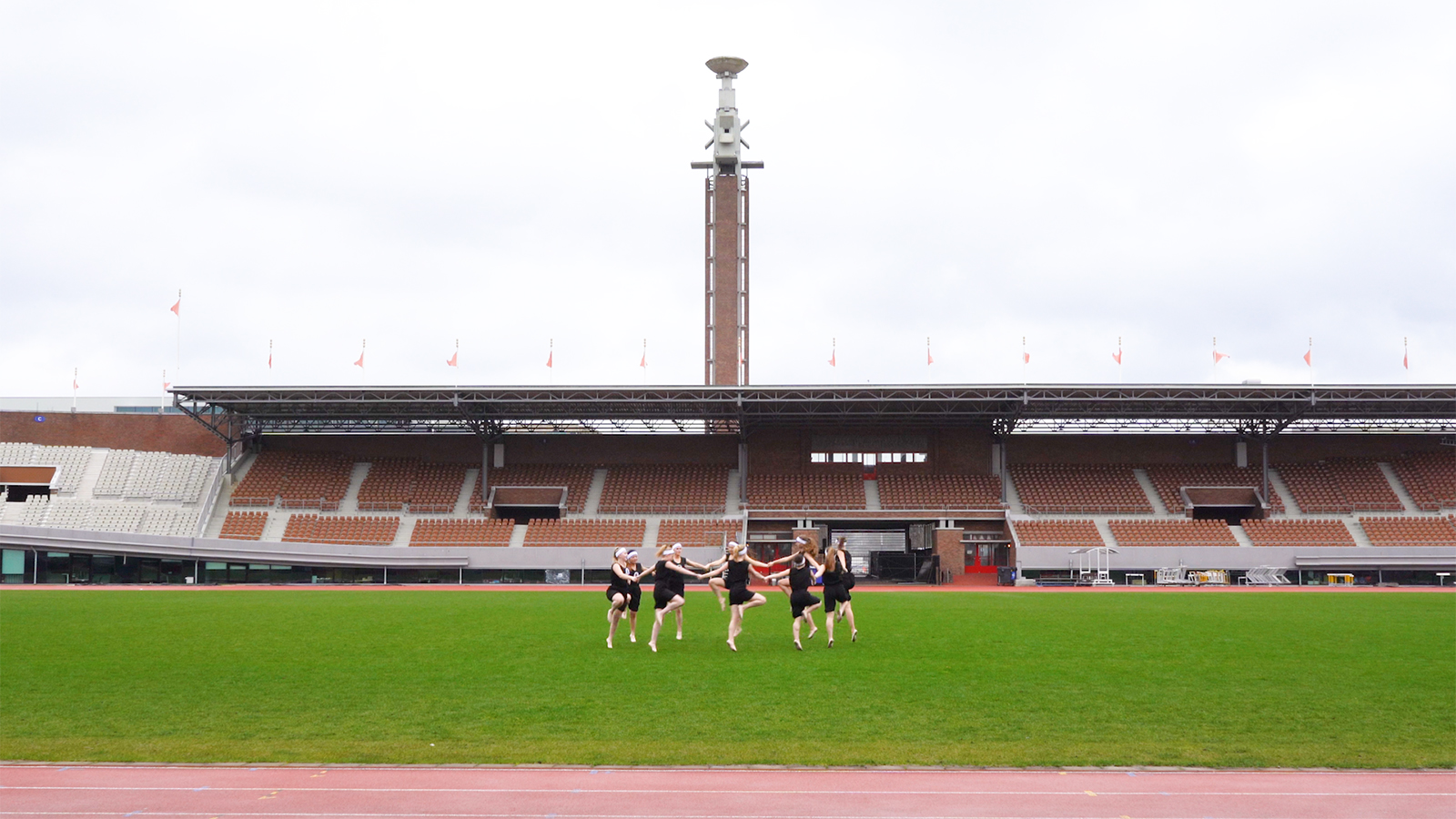Miku Sato, has been our resident during the period April – June 2020. Sato’s practice is based on fieldwork and site-specific, where she starts a project delegating her intention to the local people she selects. Through video, installation and the participatory action of people, she explores new perspectives and alternative possibilities of relationships between individuals and the world, as well as passivity and proactivity in society. Her quest is to compose her own new narratives to retell the past and present together in a different light.
In response to the Tokyo 2020 Olympics, the artist researched past Olympics, especially the Netherlands women’s national gymnastics team. This practice tries to revive facts and people that history hides; those that are not properly recorded or heard by society in different circumstances, and she finds the artist drawing her own suggestive line between past and present.
Which were the aspects in your youth, that influenced you to become an artist?
My grandmother’s older brother was an artist. He worked for a large company, but after his retirement, he painted a sort of western-style landscape paintings with watercolour and oil in his studio. And he drew illustrations for the newspaper as paid work. We lived nearby, so I visited his place often. We went out to sketch in the parks and the sea in Yokohama. He didn’t study in any art academy, but he was a nice painter. Because of him, I got familiar with painting in my childhood, but I was not as good as he was. When in high school, I was fortunate with my art teacher. She introduced me to Fluxus and contemporary arts, including very young Japanese artists of that time. Their extreme, violent and erotic works were shocking to me. She isn’t an artist, more a kind of art freak, so she had a lot of fresh information. Her looks were also different from other teachers and adults. She took me to museums and art festivals. The encounters with her definitively motivated me to go to the art academy. I was interested in performances and social practices, not painting. But as many contemporary artists graduated from the department of painting, even if they didn’t paint, I decided to go to that department. Japanese art academies separate departments for each material or skill mostly, but the oil painting department is the freest and most flexible course in each art university.
Did this art study have an important impact on the ideas you developed as an artist/painter? And what made it necessary for you to get a Masters in film and new media at Tokyo University and so to become a filmmaker too?
After entering the department of oil painting at Musashino Art University, actually I mostly didn’t paint… sometimes I had to paint but the department had a professor who is not a painter but a sculptor, so I followed his classes. I made performance works, fleeting sculptures and installations. And I recorded my momentary artworks with a video camera. I used video for just documentation, but gradually, I started to make video arts. Probably studying painting helped my videography, especially capturing the images… and there may be other reasons I’m not aware of. After graduation, I worked and continued to make artworks within a short time span. I decided to get a master’s after the early death of my parent. I studied cameras and sounds only by myself, so I wanted to develop my skills, and I needed people, time and a place to discuss and argue concentrically. Nowadays there are smartphones with good cameras and non-expensive cameras, so the skills are not absolutely necessary, I think. I chose the Graduate School of Film and New Media, Tokyo University of the Arts, because of the unique teachers and acceptable tuition, it being a public (national) school. After many experiments and new experiences like learning to code and working on some projects of the professor in my master course, eventually, somehow, my practice has advanced to approach a kind of documentary film side.


Once you started working in the airWG, you changed your plans and proposed a new challenging project for a film, which asked for a lot of difficult intensive research. How did this change come about? Did the location have anything to do with that? Did the people you meet had influence on that? How did you finally succeed in getting the necessary information to make your film?
My first plan involved the cave where “De Nachtwacht” was kept for protection during the second world war. I visited the cave in the St. Pietersberg close to Maastricht, and I was allowed to film inside. But when I looked at the viewfinder of my camera, it just was not attractive for me by intuition. By contrast, I was captivated by The Olympic Stadium in Amsterdam. Having been brought back to its original appearance, it now looks unbelievably tiny and almost seems too cute to hold any Olympic Games… Rody Luton who has a connection with the stadium helped me, so I was able to have a look inside. Already before I came to Amsterdam, I researched past Olympics games for my professor’s project, so I knew Amsterdam held the Olympic games in 1928. When I started to explore it in more depth, I came across the story of the Dutch national gymnastics team. Of its Jewish members, only one survived the war, her name being Elka de Levie.
With the Tokyo Olympics 2020 being organized, I was interested in creating something that would reflect that and could connect these locations and moments in time. It was inspiring finding such a captivating subject, however, there was some ordeal waiting for me. I wanted to cooperate with Elka’s daughters, but it wasn’t easy locating them. There is a Wikipedia page on Elka, but the information is minimal. I contacted Dutch sports journalists as well as people from the Royal Dutch Gymnastics Union in an attempt to get more information about Elka and her teammates. Sadly, they didn’t have any information on her life after the Olympics or that of her family members.
As suggested by Els van der Graaf, I then decided to write a letter and send that out to all the de Levies I could find in the Amsterdam phone book. That resulted in a response letter from one of her distant relatives, but he didn’t have any additional relevant information about Elka. After that, I researched the whole of the Netherlands using the online telephone book with Els. I don’t speak Dutch, so she made all the personal calls, something I really appreciated. In that way, we were able to locate one of Elka’s daughters. However, she wasn’t able to cooperate, due to her personal memories, still being too painful. I also got information about another daughter through the help of Rody’s husband Michiel. He found out that she now lives in Canada, but is in poor health. Eventually, I was successful in contacting and working together with Elka’s granddaughter Carolina, who lives in the Netherlands, and her mother Katrien (one of Elka’s younger daughters). Both appear in my video.
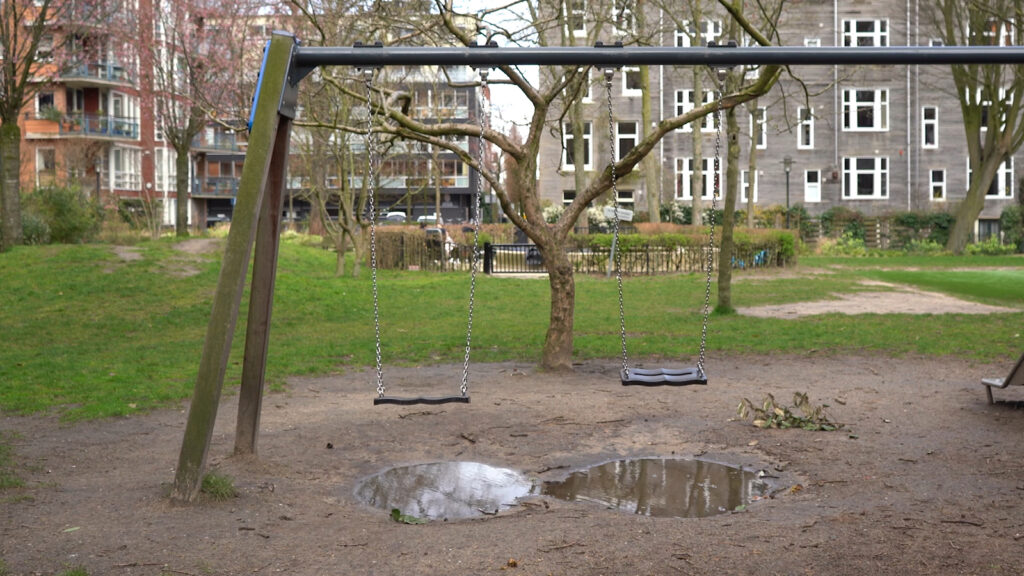
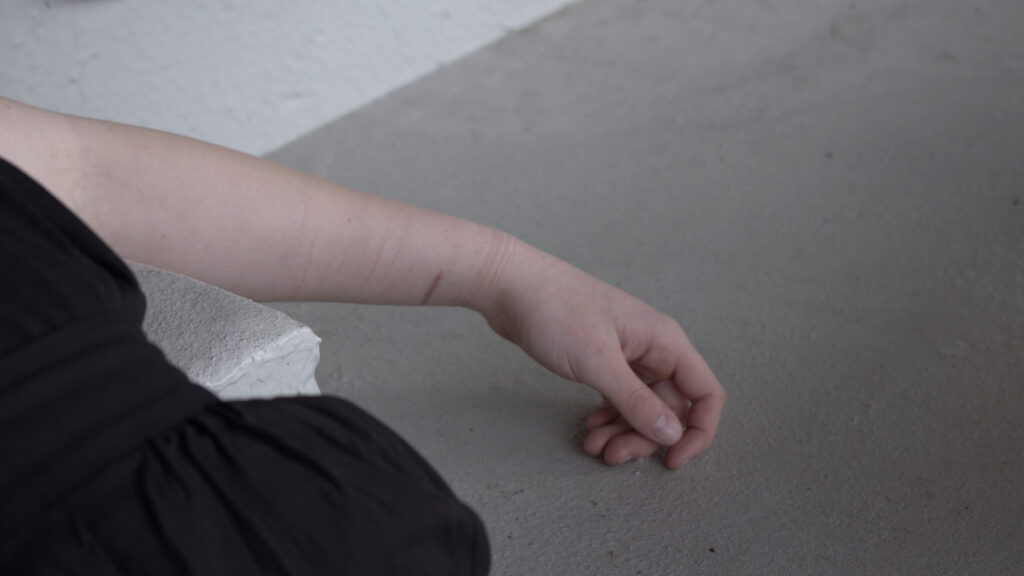
Your work brings to the surface the often quite unknown, neglected tragic consequences in the lives of individuals of past historical events (like the Second World War) What fascinates you so in this, that you return to it, time and time again in different forms and stories?
My recent video works are focused on the subject of women, who lived during the Second World War and their children and grandchildren who live in today’s world. In my practice, I ask them to stand in front of the camera. We see them infused with the spirits of their ancestors, who remain within them, enabling the performers to awaken to those latent sensibilities. Through their delegated body, the hidden shadow appears. I try to revive the women as social mediators and want to explore new perspectives and alternative possibilities of a relationship between individuals and the world, as well as passivity and pro-activity in society. My quest to make videos is to develop a new way of composing storytelling, taking a different approach from journalism, shining a different light on the past and present, and retelling the stories of the world. Why do I do it… Ultimately, I’m questioning, who am I? Who are you? And how do we live together in this complicated world? For most of the time, I’m introverted and mostly struggling with what’s in front of me and trying to come to terms with my anxieties. I tend to look away from myself and things that make me uncomfortable. Shifting my perspective to other people and locations with their own history, in order to find some links. I also started to work with others as a kind of cure. Through my practice which I delegate to local and ordinary contemporaries, who look just like me, and retell their family’s history, as their ancestors. Becoming their parents or grandparents who had experienced these historical events. Indirectly, it becomes something recognizable, something that I see in myself. And I realize that I’m also a part of history. At the same time, I might say that my practice adds some alternative annotations on the page of history, in order to address the coming future.
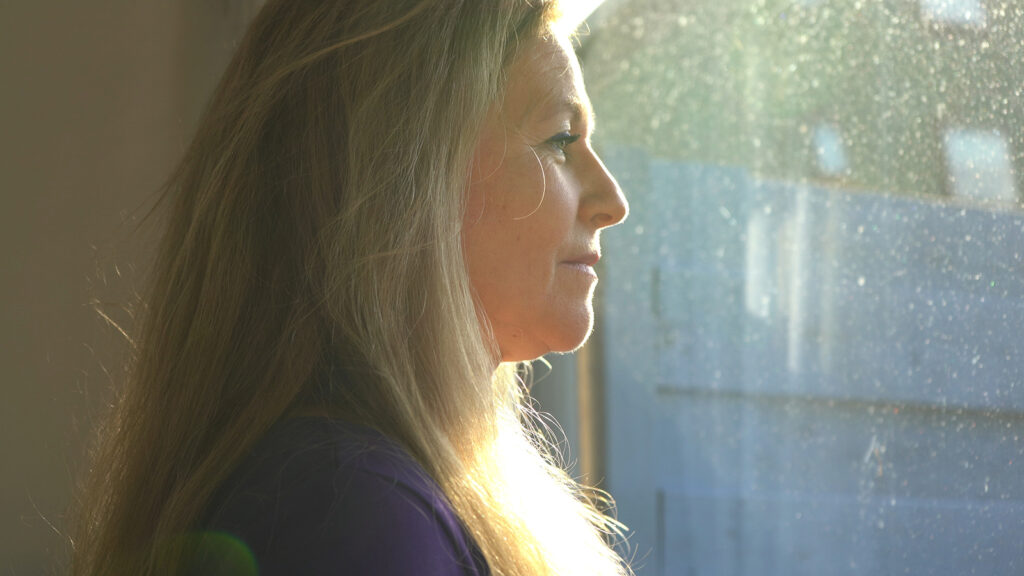
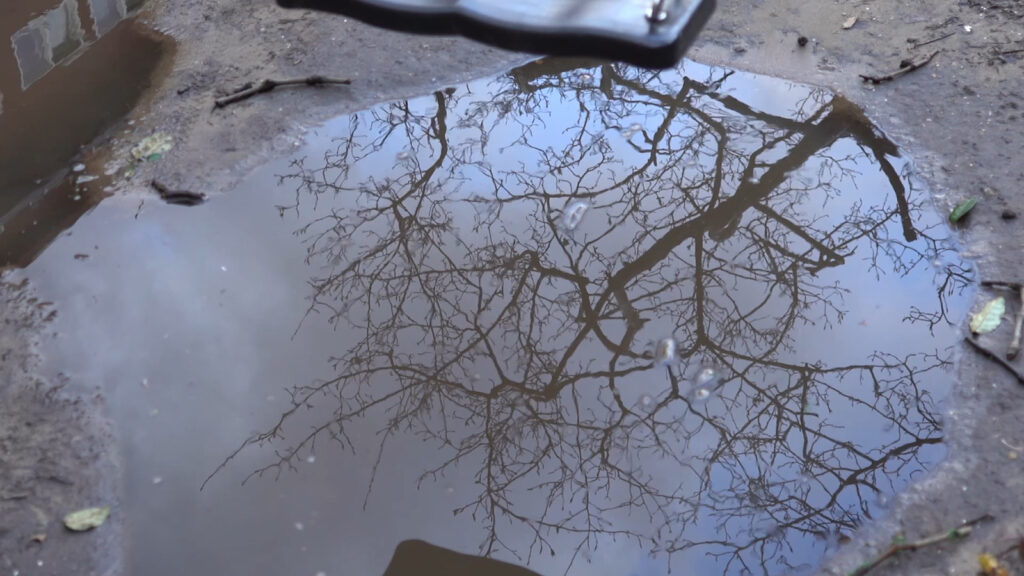
You could work together for the video “Girls Got Golds”; with Carolina, Elka’s granddaughter. In what way was she cooperating/helping you? What was her role in the story of the film? Was her cooperation important for bridging the past- present- and future? Or…?
First, I wrote a scenario telling Elka’s life by herself, with historical facts using the information from books and the interviews with sports journalists. Additionally, I asked Katrien and Carolina to revise and add extra information which only they know. And I asked Carolina to narrate as Elka in front of the camera. As you see in the video, she narrated and became gradually more emotional. Actually, I didn’t expect it. She was amazing. It was as if Elka was present through Carolina, like she had taken over her body…? But certainly, Carolina appeared as herself in the video, and she is not some sort of skillful impersonator. When I was filming her at her house with Katrien who personally experienced the holocaust, Katrien was not like Carolina. I mean she wasn’t upset; she gently watched over us. As time goes by, the people who experienced the war are disappearing, and things become history. I’ve never felt war or prosecution in my life, nor has Carolina. However, it can feel so close. Through the delegated body, the hidden shadow appears. Again, I try to revive these women as social mediators.

Image by Ilya Rabinovich

In “Girl Got Golds” there are several shots, which have a mysterious poetic aspect. On the first view, they do not seem to have a direct relation with the story about Elka and the way you tell it in the film. So do they illustrate the deeper layers, emotions and historical references, behind her personal story? And do you already have these images in mind when making a synopsis, or do they arise during actual filming?
Thank you for pointing that out. Yes, there are some abstract images in the video, for example, the shot with the swing slowly moving up and down over a puddle of water and the close-up shot of young girls, lying down on the benches of the Olympic stadium.
After filming with Carolina and Katrien, I unexpectedly came across some swings on the way back from Carolina’s house, and I was struck by the image of Katrien and her sister, playing peacefully before the war, so I filmed that swing. After that, I also found a pair of swings just in front of puntWG, with an additional puddle. The water surface rippled by the wind looked like dropping tears, something intimidated and broken. Moreover, coincidentally Katrien gave birth to Carolina in the same building where puntWG is located, as it used to be the maternal ward of the Wilhelmina Gasthuis hospital. So I felt a special connection and adopted that shot. Regarding the girls lying down, they are young, beautiful, lively and hopeful, just like the girls of the Dutch gymnastics team in 1928 were. In contrast, I wanted to film them as lifeless bodies, dragged down from the stage. You can see a small scar on the wrist of one of the girls, a reference to the damage and pain suffered.
As such, these shots were not planned but captured impromptu. During filming, I see everything through a filter, revealing the perspective of the work. These shots have some meaning or trigger for me, but I don’t want to explain them by words, rather just leave some marginal space.
Which project(s) are you working on after the residence and what are your plans for the coming time?
My next project is about women, colonization and the kitchen. I’m going to film it in Rotterdam where many immigrants live, and where I got an opportunity for a residency program Foundation B.a.d. there for four months. The project will be a multi-channel video installation and the last piece of the trilogy of women and the war. The first one is “Retelling Yokohama”(2019) and the second one is “Girls Got Golds”. I’m going to approach the descendants of the parties concerned about the war, just like the previous two works, and I will try to film stop-motion animation as a part of the video.
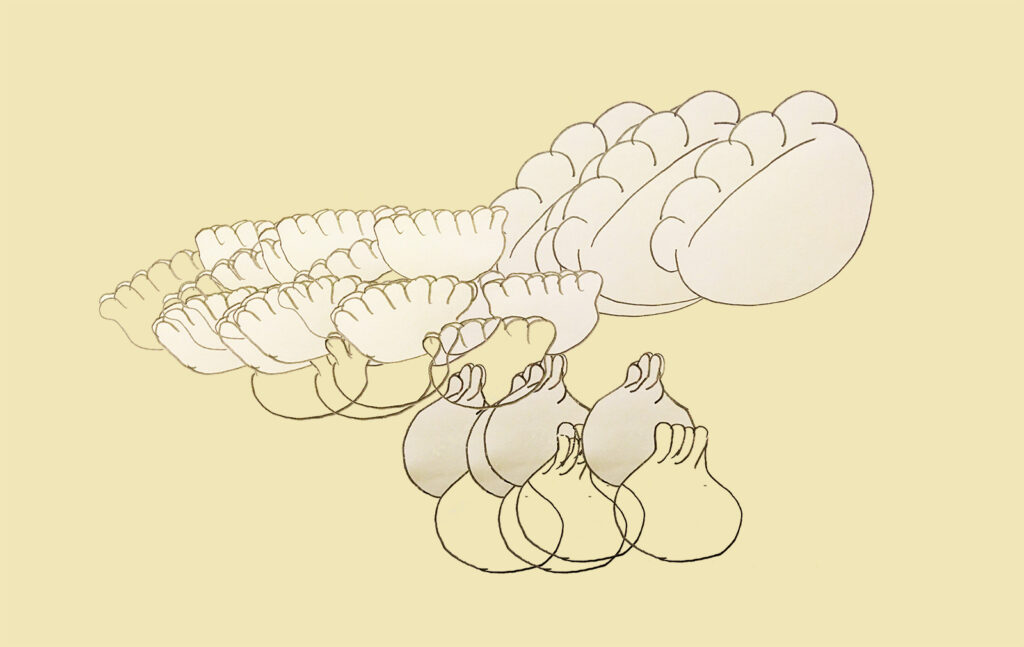
By: Els van der Graaf & Rob ter Haar, airWG.
